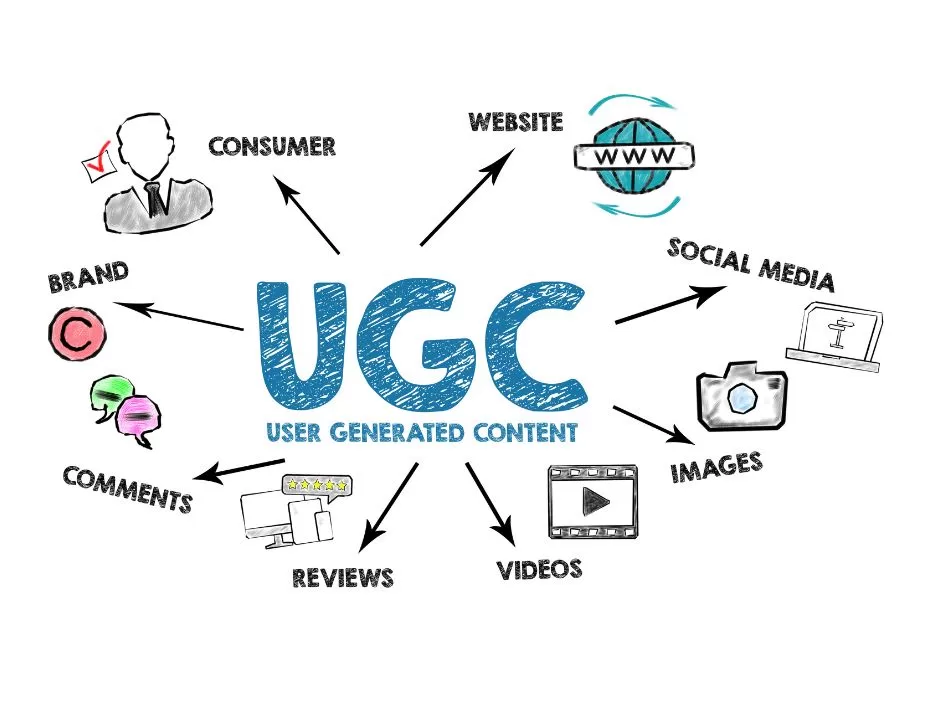
Word-of-mouth advertising has been a cornerstone of marketing for centuries. From whispered recommendations among neighbors to viral social media trends, the power of people influencing others has remained constant. However, the digital age has transformed how word-of-mouth spreads, giving rise to a new phenomenon: User-Generated Content (UGC).
UGC is any form of content created by users rather than a brand or its agency. This includes everything from product reviews and social media posts to videos, photos, and blog articles. In essence, UGC is the modern incarnation of word-of-mouth advertising, amplified and accelerated by technology.
This article will explore the evolution of word-of-mouth advertising, the rise of UGC, its impact on marketing strategies, and the future of this powerful tool.
The Rise of UGC
The advent of the internet and the subsequent explosion of social media platforms provided the fertile ground for UGC to flourish. With billions of people connected digitally, sharing experiences and opinions became easier than ever before.
Several factors contributed to the rapid growth of UGC:
- Accessibility of technology: Smartphones and user-friendly editing tools have made content creation accessible to everyone.
- Social media platforms: Platforms like Instagram, TikTok, and YouTube offer vast audiences for UGC to be shared and discovered.
- Consumer empowerment: Consumers are no longer passive recipients of information; they actively seek out and share their opinions.
UGC comes in various forms, each with its own impact:
- Reviews and ratings: These provide valuable feedback for businesses and influence purchasing decisions.
- Social media posts: Shared experiences, photos, and videos can create viral moments and build brand awareness.
- User-generated videos: Platforms like YouTube and TikTok have become hubs for creative and engaging UGC.
- Blog posts and articles: In-depth reviews and comparisons can establish users as influencers in their niche.
Why UGC Works
The effectiveness of UGC can be attributed to several psychological factors:
- Social proof: People are more likely to trust recommendations from peers than from brands.
- Authenticity: UGC feels genuine and relatable, building trust between consumers and brands.
- **User-generated content is often more engaging and shareable than traditional advertising.
- **UGC can target specific audiences and niches more effectively than traditional advertising.
Compared to traditional advertising, UGC offers several advantages:
- Cost-effectiveness: Leveraging user-generated content is often cheaper than producing professional advertising materials.
- Reach: UGC can spread organically through social media, reaching a wider audience than traditional advertising.
- Credibility: Consumers are more likely to believe recommendations from other consumers.
- Engagement: UGC encourages interaction and fosters a sense of community around the brand.
UGC and Marketing Strategies
To harness the power of UGC, businesses need to implement effective strategies:
- Encourage UGC creation: Run contests, offer incentives, and make it easy for customers to share their experiences.
- Identify and partner with influencers: Collaborate with users who have a significant following to amplify your brand’s reach.
- Monitor and respond to UGC: Engage with customers, address concerns promptly, and celebrate positive feedback.
- Measure the impact of UGC campaigns: Track metrics like engagement, reach, and conversions to assess ROI.
While UGC offers immense potential, it also presents challenges:
- Negative reviews: Negative feedback can damage a brand’s reputation if not handled properly.
- Brand hijacking: Users might misuse brand assets or create content that doesn’t align with the brand’s values.
- Consistency: Ensuring that UGC aligns with the brand’s image can be challenging.
The Future of UGC
The future of UGC is bright, with several emerging trends shaping the landscape:
- AI-generated content: AI tools can help create personalized UGC experiences and enhance content creation.
- Virtual influencers: Digital characters with human-like qualities are becoming platforms for UGC.
- UGC-driven commerce: Platforms will emerge that facilitate direct sales through user-generated content.
- Ethical considerations: As UGC becomes more influential, ethical guidelines will need to be established.
UGC has the potential to transform the way brands connect with consumers. By understanding the psychology behind UGC, implementing effective strategies, and staying ahead of emerging trends, businesses can harness the power of this powerful marketing tool.
Conclusion
UGC has revolutionized the way brands interact with consumers. By providing authentic, user-generated content, businesses can build trust, increase engagement, and drive sales. As technology continues to evolve, UGC will play an even more critical role in marketing success.
The future of advertising lies in the hands of consumers. By empowering them to create and share content, brands can tap into a wellspring of creativity and authenticity that will shape the marketing landscape for years to come.


